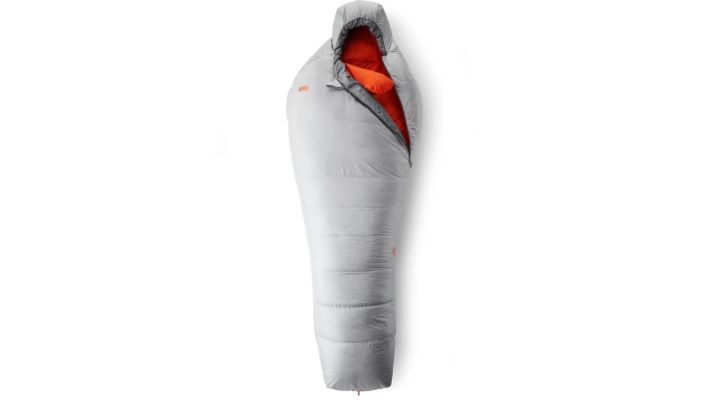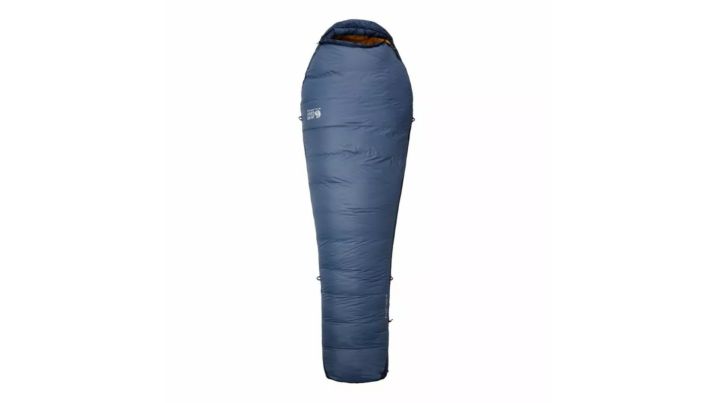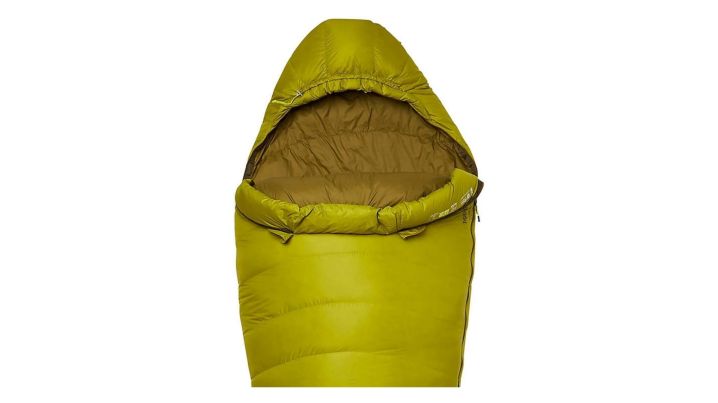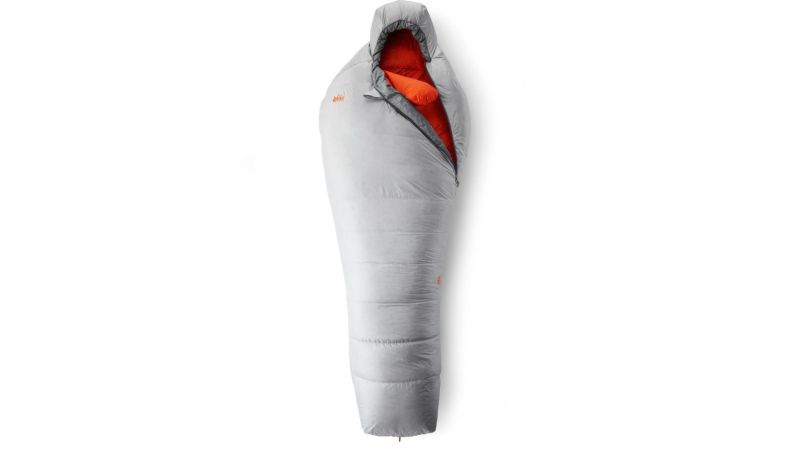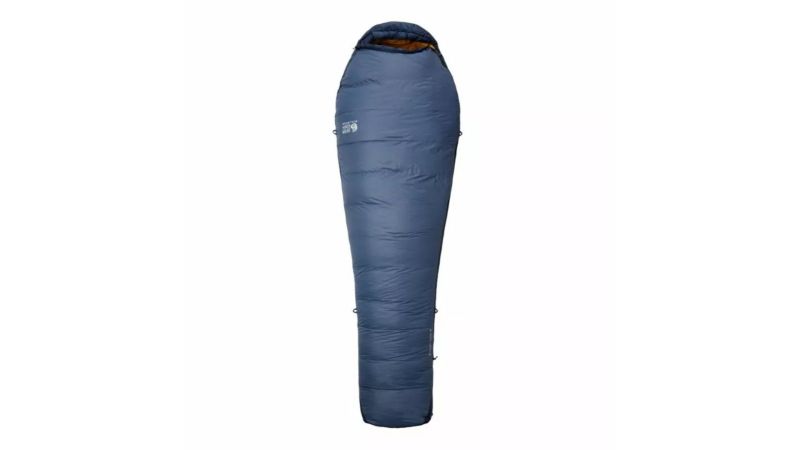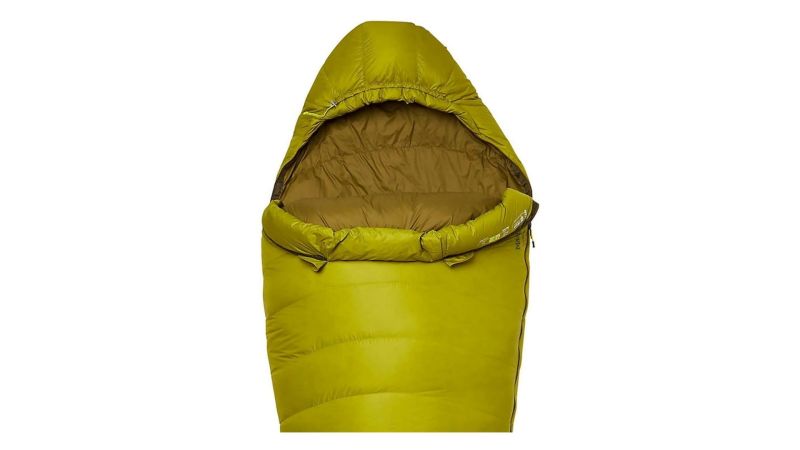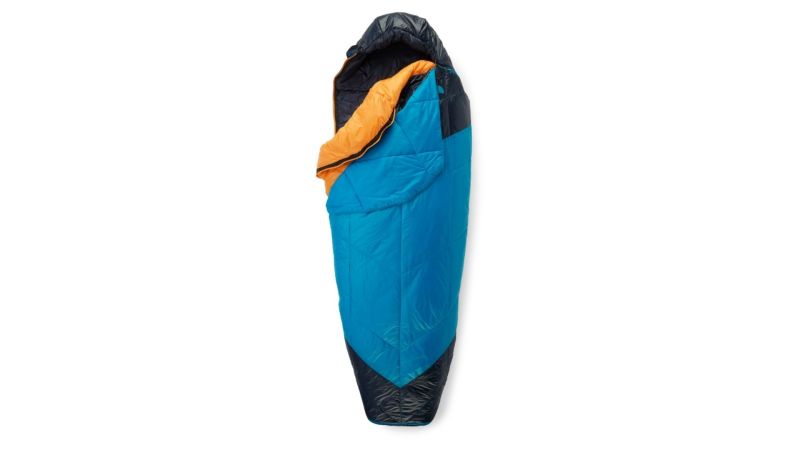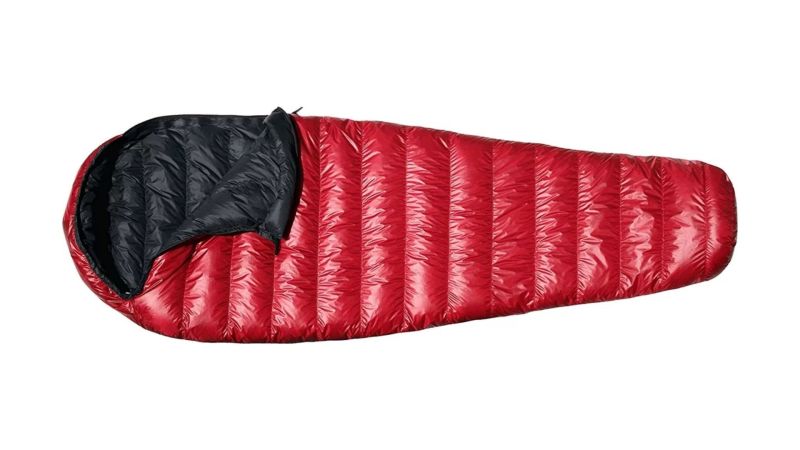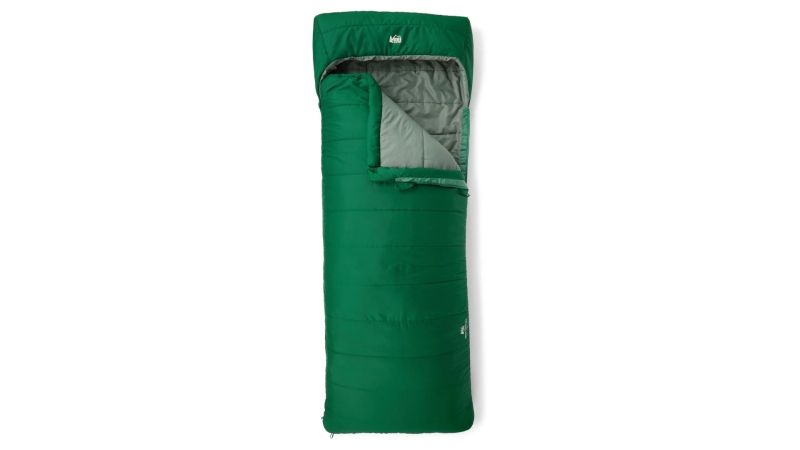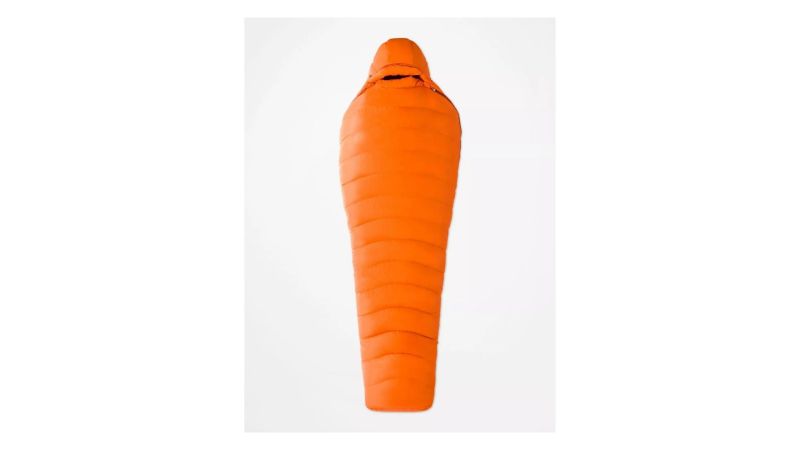We may earn revenue from the products available on this page and participate in affiliate programs.
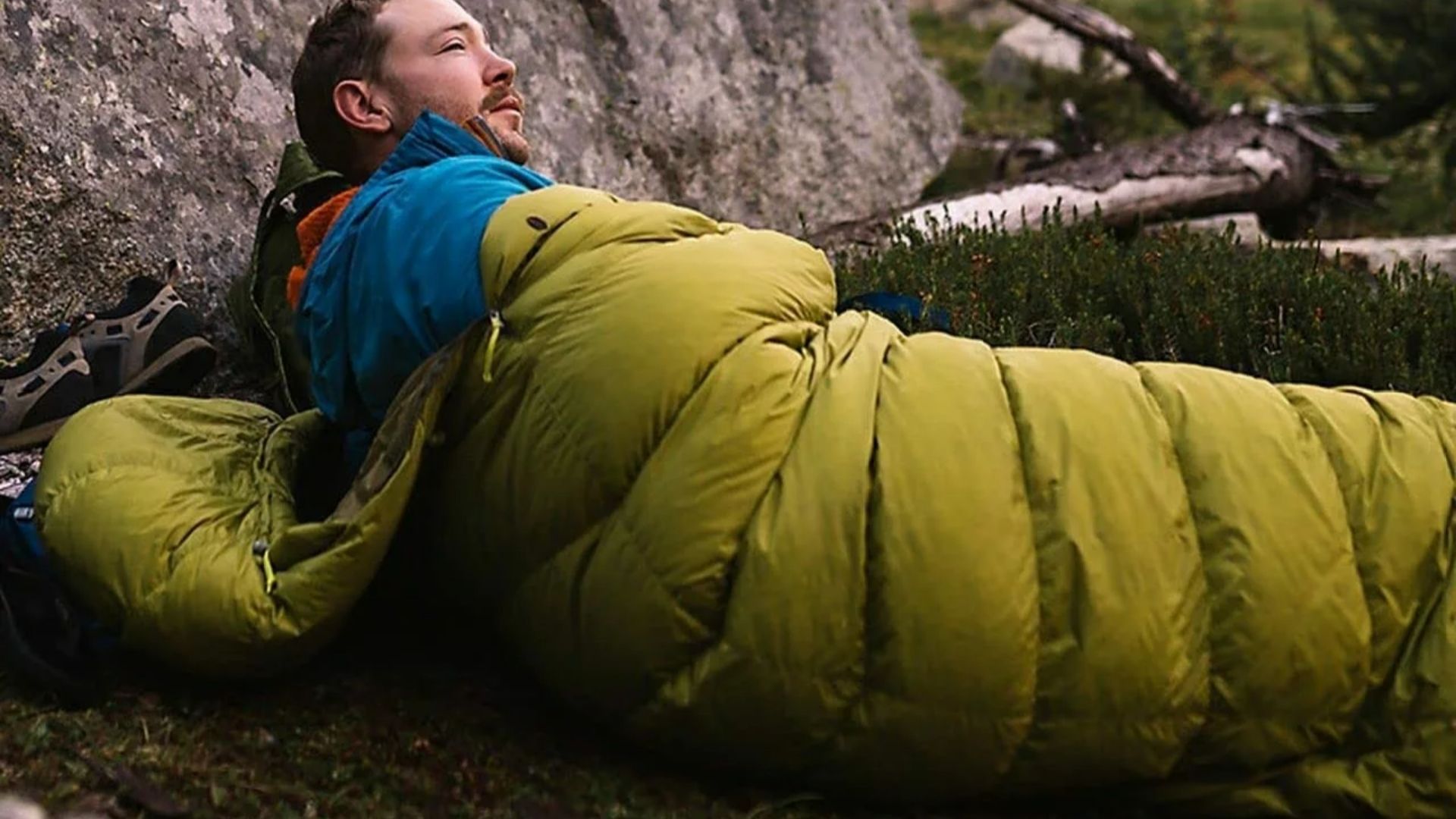
The Marine Corps Infantry Officer Course has a saying, “fight light, freeze at night,” which, put another way, means leave anything that could possibly keep you warm behind — especially bulky things like sleeping bags. This is a dumb philosophy and makes for some really unpleasantly cold nights in the field that leave you poorly rested for the next day. It’s also an excuse for a military force that insists on purchasing overdesigned, heavy, requirements-bound gear when the commercial sector already did all the headwork and has better solutions. You can do better during your next camping trip by investing in one of the best backpacking sleeping bags out there.
After 20 years in the Marine Corps, I believe wholeheartedly in carrying as little weight in my pack as possible, but with so many excellent commercial off-the-shelf sleeping bags on the market, there’s really no reason to not take one along on your next overnight outdoor excursion. To that end, I’ve taken a look at the best backpacking sleeping bags available on the market for myriad purposes, from car camping to extended trips into the backcountry and everything in between, to help you find the bag that’s right for you.
Best Overall
REI Co-op Magma 30
Best Value
Mountain Hardwear Bishop Pass 30
Editor’s Choice
Marmot Hydrogen 30F Sleeping Bag
Most Versatile
The North Face One Bag
Best Ultralight
Western Mountaineering SummerLite
Best for Camping
REI Co-Op Siesta Hooded 25
Best Cold-Weather
Marmot Lithium 0
Why you should trust us
I have more than 35 years of backcountry experience. I’m an avid long-distance backpacker, rock climber, and mountaineer who understands the value well-designed gear delivers, especially when your life depends on it. I don’t get paid by the manufacturers and have editorial independence. My editor leaves it to me to recommend and prints what I write. All of this enables me to provide you, our valued readers, with our unvarnished, honest opinions on the recommendations we make.
Types of backpacking sleeping bags
Shopping for a good backpacking sleeping bag can be a bewildering experience. It helps to first identify what you will use the bag for prior to starting your search. The more dialed in your anticipated needs, the easier it is to filter out the bags that won’t satisfy
Backpacking sleeping bags are different from regular camping sleeping bags in three important ways: they’re lighter, they pack smaller, and they have a higher warmth-to-weight ratio. When considering your purchase, select the bag with the best warmth-to-weight ratio that will meet the needs of most of your trips and carry the lightest and most compressible you can afford. Every ounce in your pack counts when traveling dozens of miles day after day. Also, remember that your sleeping bag depends on what’s underneath it for optimal efficiency, so check out the R-value of your sleeping pad. Try to get a lightweight one that has an R-value greater than four. Backpacking sleeping bags come generally with two choices of insulation: synthetic or down.
Synthetic
The advantages of synthetic insulation are twofold. Most importantly, synthetic insulation performs better when wet because it does a much better job retaining its loft and it also tends to dry out faster than down. They also generally cost less. The disadvantages are that synthetic bags don’t compress as small as their down counterparts, and they weigh more for the same insulative performance. Synthetic is better in damp conditions and is non-allergenic.
Down
Down remains nature’s best insulator, as it has a very high warmth-to-weight ratio and incredible compressibility. Down bags weigh less and compress smaller than synthetic filled bags, and they also cost more — sometimes much more. Down fibers also tend to last longer than synthetics which compress over time and lose R-value. On the downside, down is also a cold mess when wet because when wet, the feathers clump and lose their ability to trap dead air to insulate, leaving you a frigid, shivering mess. The good news is that it’s not that hard to keep a down bag dry these days with DWR-treated shells and water-resistant down. Down is best in cold, dry conditions.
Shape
Backpacking sleeping bags are almost exclusively mummy-shaped bags which increase warmth and minimize weight through a more form-fitting design. Semi-rectangular or rectangular-shaped bags are generally for camping since they are heavier and tend to be colder due to the increased interior volume (your body has to heat up all that air).
Season
Although there isn’t an industry-wide hard and fast rule, I consider any bag that’s rated 20F or above to be a three-season bag (spring, summer, and fall use), and any bag that’s rated below 20F to be a four-season bag.
Key features of backpacking sleeping bags
Temperature ratings
It’s important to understand how backpacking sleeping bags are rated and to check the specs, where you’ll see a Comfort Limit, a Lower Limit, and an Extreme Rating. (Note: no rating is a guarantee of comfort since that depends on three factors: your bag, what’s under your bag (sleeping pad), and what you wear while in the bag).
- The Comfort Limit is the temperature at which someone who sleeps cold should feel comfortable. Think of this as the temperature at which an average-sized woman would sleep comfortably. (Women’s bags typically weigh more than mens at the same rating due to them having more insulation. Biologically, women sleep colder on average than men.)
- The Lower Limit is the temperature a warm sleeper or average-sized man should feel comfortable.
- The Extreme Rating is the lowest temperature an average woman could survive while sleeping in the bag. At this temperature, you will be miserable, but won’t likely die while inside the bag.
Hood
Many lightweight bags sacrifice a hood to save on overall advertised weight. I don’t recommend hoodless bags. The majority of heat lost in the human body is through the head and a hood makes a huge difference in retaining heat when cinched around your head.
Draft tubes
Zippers are prime heat loss points in a sleeping bag, and quality bags will have a draft tube running the entire length of the zipper to keep the warm air your body worked so hard to heat next to your body where it belongs. Well-designed bags will also feature a neck baffle to help retain heat.
Anti-snag zippers
Sleeping bag zippers are notorious for snagging, and many a curse word has been shed by tired backpackers who just want to go to sleep. Look for zippers with a full-length guard or zipper cover.
Stash pocket
Many high-end bags will also include a small stash pocket in the chest area of the bag. This is a great place to stow your phone, headlamp, and other small items.
Pricing considerations of backpacking sleeping bags
Budget
Anything under $200 is a budget-level bag. Be careful in this zone and try to find bags with better than 650 fill power down. Typically, the less you pay, the heavier the bag due to synthetic insulation or lower-quality down.
Mid-range
You should be able to find a great mid-range backpacking bag with most of the features you need at an acceptable price and low weight for $200 to $350. Look for bags with 800 or greater fill power down at this price point.
Premium
I consider anything over $350 to be a premium bag. These will be the most efficient in terms of warmth-to-weight, and the lightest and most packable. They’ll also have the best and most features.
How we chose our top picks
All the backpacking sleeping bags in this review were selected based on personal ownership, hands-on inspection, interviewing other experts, and thoroughly reviewing manufacturers’ specifications. We take our time to get to know the strengths and weaknesses of each item, and also check out the reviews of other experts just to make sure we’re not missing anything.
FAQs on backpacking sleeping bags
You’ve got questions, Task & Purpose has answers.
Q. How do you pack a sleeping bag in a backpack?
A: The best way to pack a sleeping bag is to invert it and stuff it into a compression stuff sack to smash it to the smallest possible mass. Place lighter items like sleeping bags at the bottom of your pack and heavier items higher up between your shoulders. Make sure you put down insulated bags in a waterproof stuff sack or waterproof the main compartment of your backpack with a large leaf bag.
Q. What’s the best size sleeping bag for backpacking?
A: Get the one that matches your height most closely. Most mid- and high-end bag manufacturers offer their bags in regular (up to 72 inches) or long (up to 78 inches). Some offer small or short variants (around 66 inches), and some premium manufacturers even offer small, regular, and large girth size options. Other high-end manufacturers offer made-to-order custom bags.
Q. How heavy should a backpacking sleeping bag be?
A: Look for the lightest bag that meets your desired temperature range. Most good three-season bags weigh less than two pounds, and good four-season bags weigh less than three pounds.
Q. What’s the difference between a backpacking and camping sleeping bag?
A: Backpacking bags are much lighter, more compressible, and more efficient in terms of warmth-to-weight ratios due to high power (800+) down fill, thin high-tensile shell material, and mummy-shaped form-fitting design.
Q. How is down fill power measured?
A: Down is measured by fill power — how much loft and volume it provides per ounce. It’s a relative measure of down quality in terms of fluffiness. Fill power is a measure of how many cubic inches of loft that one ounce of down produces. For instance, 650 fill power down means one ounce by weight will provide 650 cubic inches of loft and thus dead trapped air. Similarly, one ounce of 800 fill power down will provide an additional 150 cubic inches of loft — more insulation for the same weight. The higher the number, the higher the quality. Note that you need to combine fill power with fill weight to determine how warm a sleeping bag is because a bag with 10 ounces of 600 fill down won’t be nearly as warm as a bag with 10 ounces of 800 fill down.
Our gear section
Joe Plenzler is a Marine Corps veteran who served from 1995 to 2015. He is a backcountry expert, long-distance backpacker, rock climber, kayaker, cyclist, wannabe mountaineer, and the world’s OK-est guitar player. He is currently section-hiking the Appalachian Trail with his partner, Kate Germano. He supports his outdoor addiction by working as a human communication consultant, teaching at the College of Southern Maryland, and helping start-up companies with their public relations and marketing efforts.
